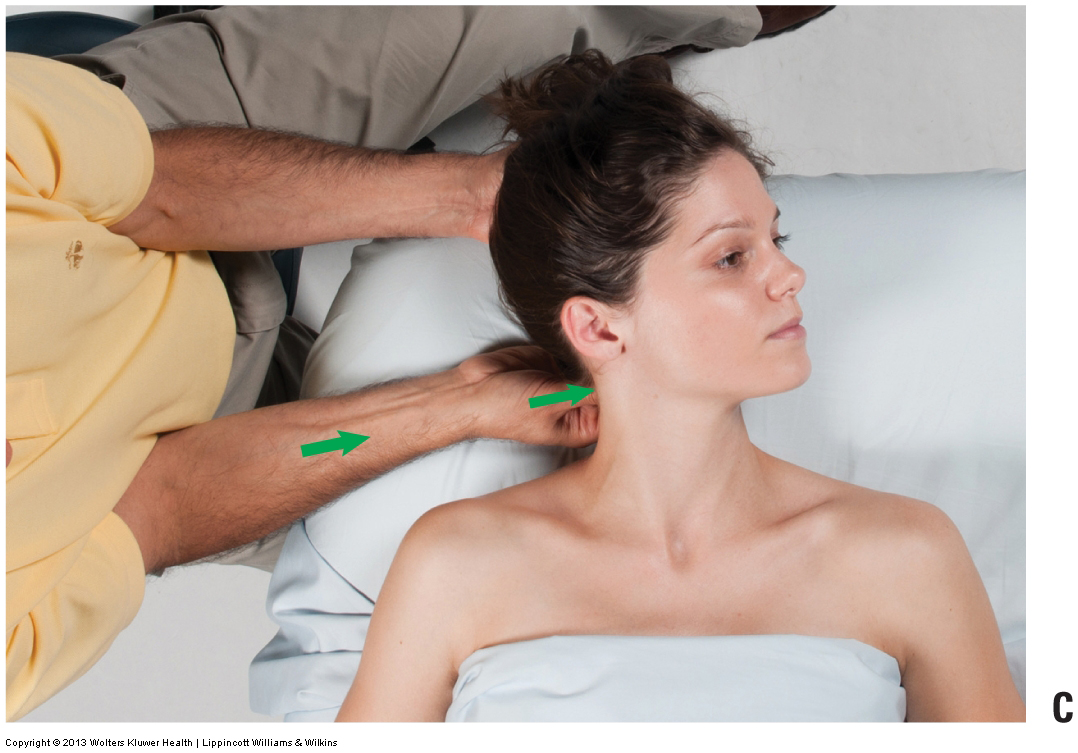This blog post article is the fourth in a series of ten articles on Deep Pressure Massage of the Neck
Positioning the Client for Deep Pressure Massage
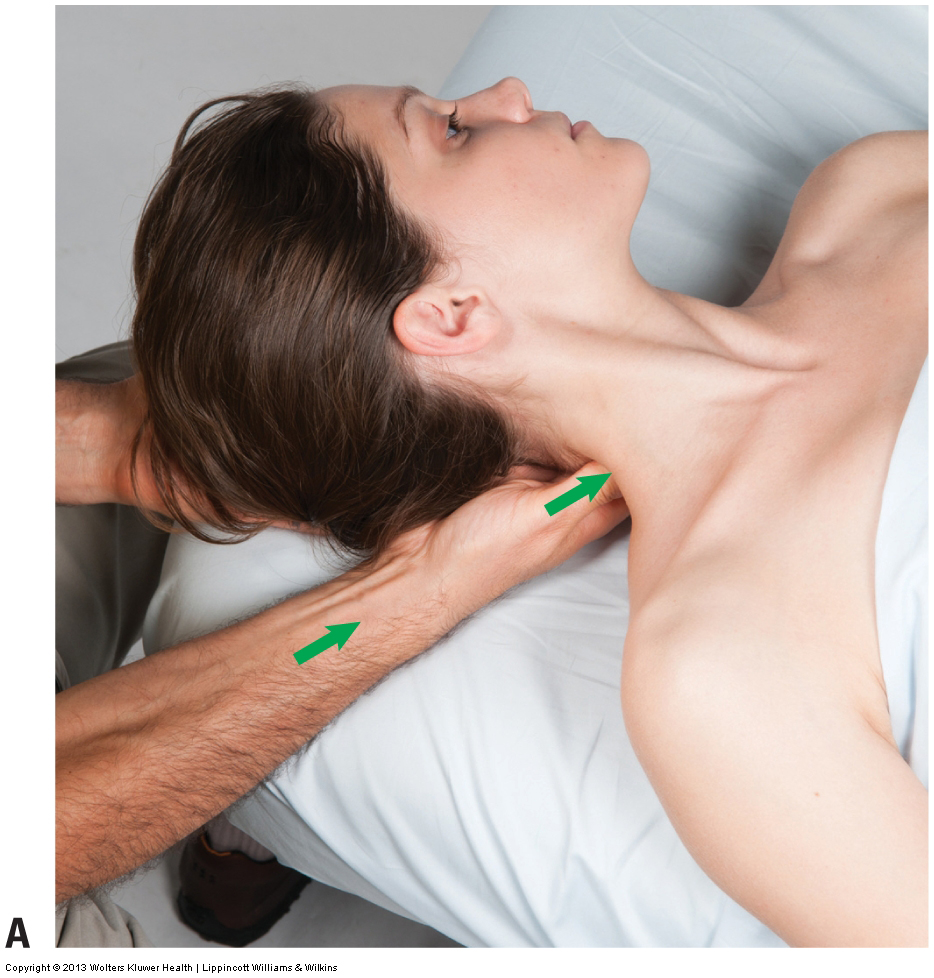
Figure 6. Two positions for the client on the table. (A) The client lies far to the side of the table, allowing the therapist to use the core when generating pressure. (B) The client lies farther from the therapist, allowing the therapist to rest the forearm on the table to better stabilize it when pressing into the client’s neck. Permission Joseph E. Muscolino. Advanced Treatment Techniques for the Manual Therapist: Neck (2015).
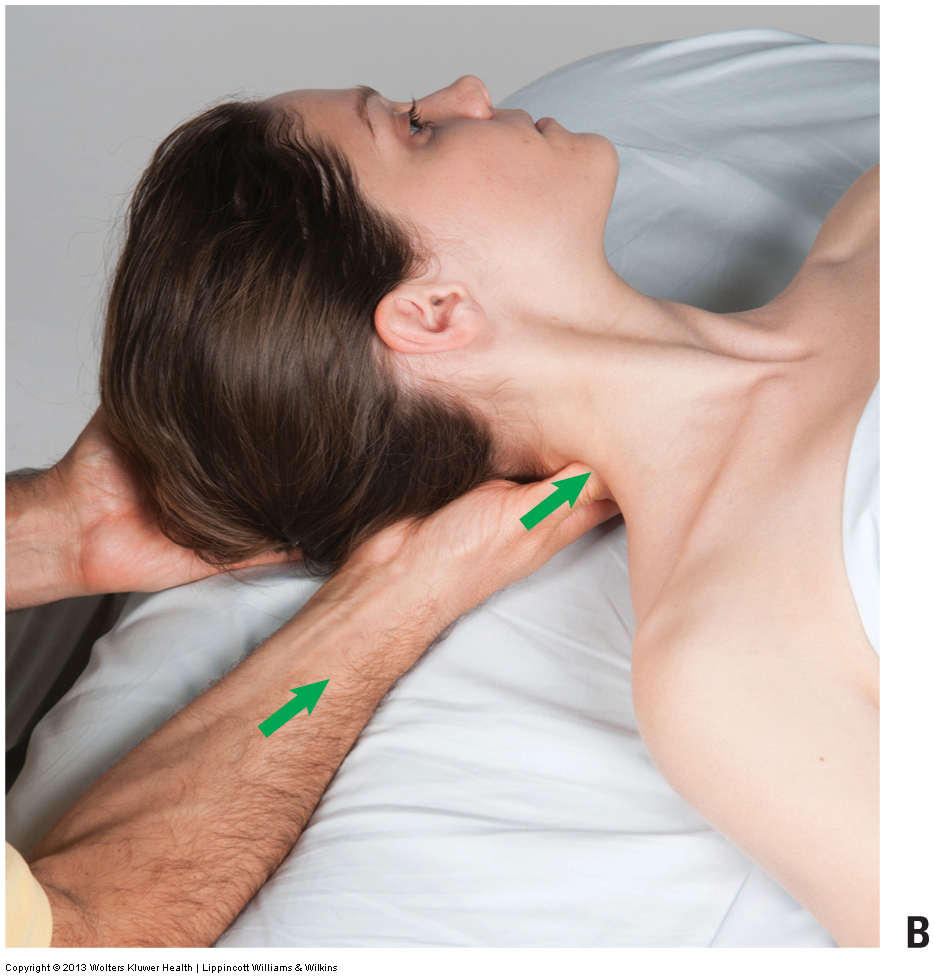
Figure 6B. Permission Joseph E. Muscolino. Advanced Treatment Techniques for the Manual Therapist: Neck (2015).
Typically, when the client is supine, he or she is lying in the middle of the table, centered between the left and right sides of the table. However, this is not necessarily the best location for efficient body mechanics on your part to perform deep pressure massage. It is better to have the client slide over to the side of the table where you are working—in other words, to the right side when you are working the right side of the neck. This prevents you from having to lean over, thereby reducing stress to your back and shoulder. It also allows you to get your core in closer to the client, permitting more efficient use of your body weight and the engagement of larger muscles.
For deep pressure massage to the neck, it is also helpful to alter the position of the client as needed to be closer to or farther from the head (top) of the table. Generally, it is preferable to have the client as close to the head of the table as possible, again so the client is closer to you, preventing you from having to lean over. However, there are times when having the client a little farther down toward the foot-end of the table is better because it allows you to place the forearm of your treatment hand on the table to both rest your upper extremity while working and to better stabilize the forearm and use the table to push off from when pressing into the client’s neck. Figure 6 illustrates client positioning on the table.
Adjusting Your Seated Position for Deep Pressure Massage
When working the neck with the client supine, it is typical for the therapist to sit, centered at the head of the table. However, this does not allow for efficient body mechanics because it is difficult or impossible to position your core in line with the stroke. To position your core in line with your stroke, make sure that your belly button is in line with the line of the forearm of your treatment hand. Optimally positioning your core requires you to optimally position where you sit.
Pressure is most efficiently applied by pressing in at a 90-degree angle (perpendicular) to the contour of the client’s neck. Therefore, when you are working into the top of the client’s shoulder (at the base of the neck), you should sit near the center of the head of the table, perhaps slightly to the side being worked. However, as you work higher up into the client’s neck, you need to move your stool around to the side of the table. How far around the side you sit is based on how high up in the neck you are working. Figure 7 illustrates the optimal seated positions for the therapist based on the region of the neck being worked. Using a rolling stool is helpful when working the neck because it allows the therapist to easily change seated location (Fig. 8)
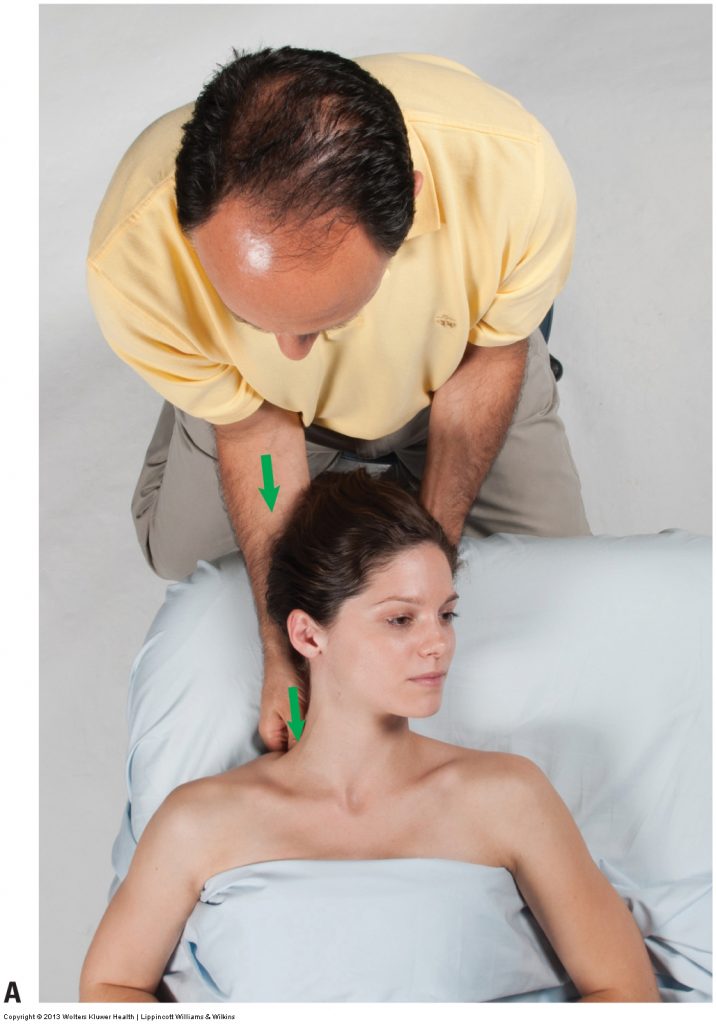
Figure 7. Optimal seated positions for the therapist. The therapist’s seated location differs based on which aspect of the client’s neck is being worked. (A) Working the base of the client’s neck. (B) Working the middle of the client’s neck. (C) Working the client’s upper neck. Permission Joseph E. Muscolino. Advanced Treatment Techniques for the Manual Therapist: Neck (2015).
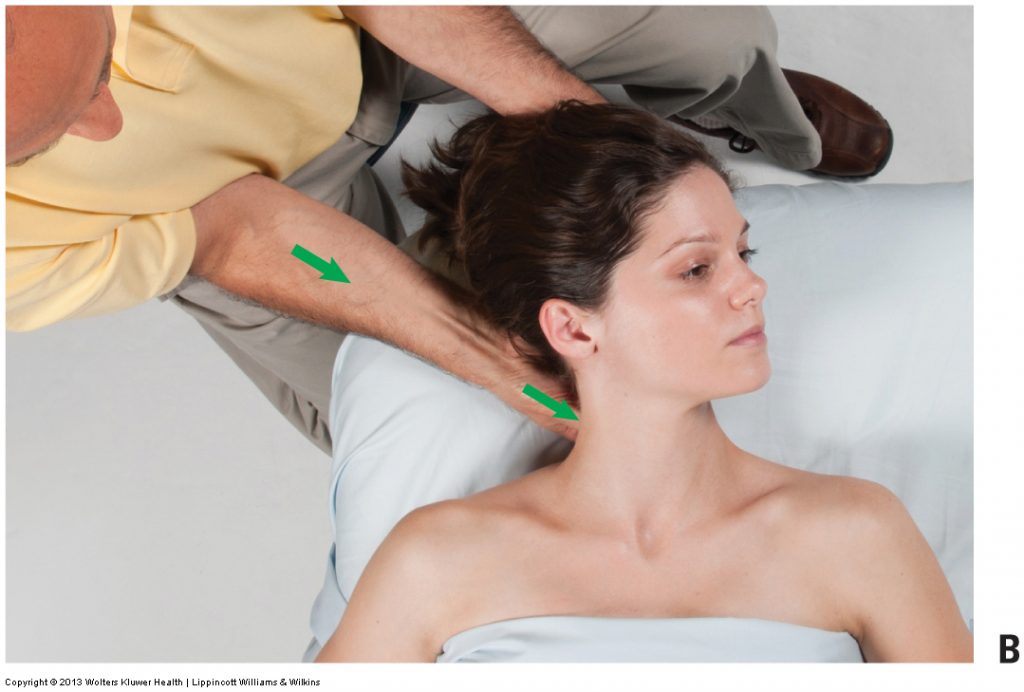
Figure 7B. Permission Joseph E. Muscolino. Advanced Treatment Techniques for the Manual Therapist: Neck (2015).

Figure 7C. Permission Joseph E. Muscolino. Advanced Treatment Techniques for the Manual Therapist: Neck (2015).
Choosing the Stool
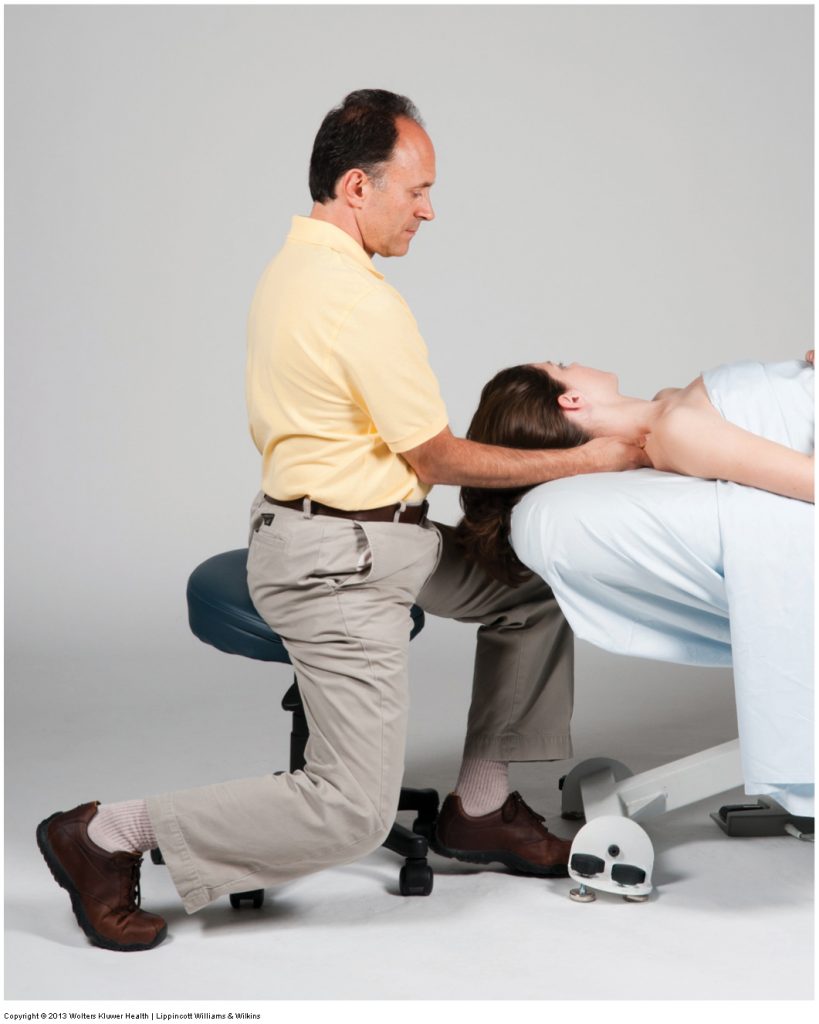
Figure 8. When working with a rolling stool, the therapist can stabilize his or her own body and the stool by placing a foot on the floor. Permission Joseph E. Muscolino. Advanced Treatment Techniques for the Manual Therapist: Neck (2015).
Because you need to change the location where you sit as you change the region of the client’s neck that you are treating, it can be helpful to use a rolling stool to sit on; a rolling stool facilitates your ability to move freely around the table. However, the disadvantage to a rolling stool is that when you press into the client, if you are not adequately stabilized, instead of your pressure translating into the client, it may roll you backward away from the client because of the stool’s mobility. If you use a rolling stool, it is important either to find one that has wheels that can easily lock and unlock, or to ground your feet well on the floor to stabilize you and the stool (see Fig. 8).
This blog post article is one of ten articles on Deep Pressure Massage Technique to the Neck.
The ten articles are:
- Introduction to Deep Pressure Massage Technique to the Neck
- Neck Deep Pressure Massage: Using Bodyweight and Muscular Effort
- Neck Deep Pressure Massage: Overview
- Neck Deep Pressure Massage: Step by Step – Positioning
- Neck Deep Pressure Massage: Step by Step – Contacts
- Neck Deep Pressure Massage: Step by Step – Use Your Core
- Neck Deep Pressure Massage: Step by Step – Apply Pressure Perpendiculary
- Neck Deep Pressure Massage: Step by Step – Engage the Tissues
- Neck Deep Pressure Massage: Step by Step – Deep Stroking Massage
- Neck Deep Pressure Massage: Prone and Side-Lying


